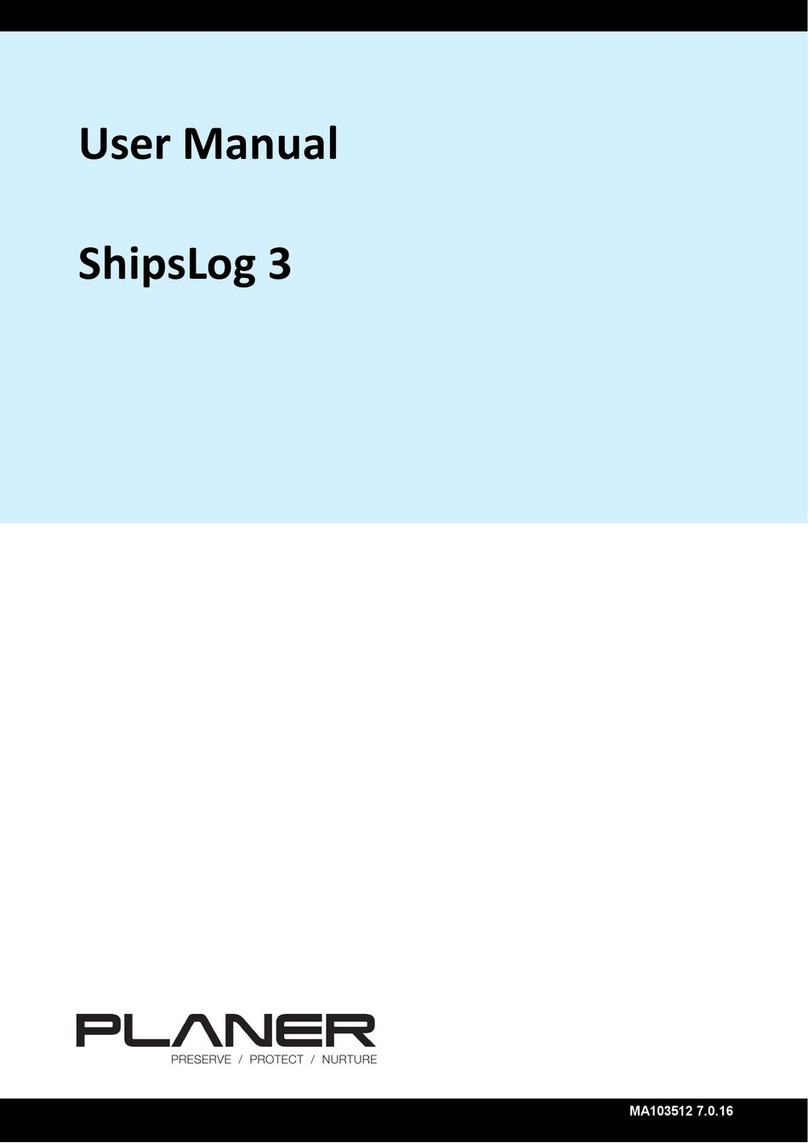
1
Shipslog Safety Instructions
1 Introduction
The ShipsLog™ is a temperature monitoring system for samples transported in liquid nitrogen
vapour shippers. It provides traceability for the temperature of the samples and can provide alarms at
predefined setpoints during the transit period.
The ShipsLog monitor is supplied either fitted to the top of the vapour shipper's cover or with a flying
lead for positioning within the sample area.
Samples may be transported in the knowledge that on arrival at the destination, the recipient can
quickly check the LED display and confirm whether the temperature experienced by the samples
has deviated outside of the predefined limits. The full temperature history can also be downloaded to
confirm the exact temperature pattern throughout the journey.
The logger is user-programmable via PC software. The logging process can be started either by
using the PC software or by using the magnetic swipe key provided. By using the PC software, the
data can be analysed by both sender and receiver.
1.1 Safety
Warning
Failure to comply with these instructions could result in personal injury.
Retain these instructions for future use.
Operating the system in a manner not specified within in this manual or under conditions outside
of the specifications may result in the protection offered by the equipment being impaired.
Also follow the safety instructions accompanying the dry-shipper with which the Shipslog is to be
used.
This product contains a lithium battery that can present a fire, severe burn and explosion hazard to
users if misused. Do not attempt to recharge, disassemble, heat above 145 °C, incinerate or
expose contents to water.
Avoid nitrogen build up. Anywhere liquid nitrogen is used must be well ventilated to reduce the
risk of nitrogen build up. Small volumes of liquid nitrogen convert to very large volumes of gas. This
can result in drowsiness, or in extreme cases, asphyxiation.
When liquid nitrogen is used in confined spaces, oxygen-deficiency alarms must be installed.
Guidance on ventilation requirements are given in BCGA Code of Practice CP30, The safe use of
liquid nitrogen dewars up to 50 litres.
When there is a risk of reduced or insufficient ventilation when a room is unoccupied, then alarms
to indicate oxygen deficiency must be installed and positioned outside of the room so that
operators are aware of the hazard before entering. The operational status of such an alarm should
also be visible from outside the room.
If liquid nitrogen is used in an area that requires forced ventilation, an alarm to indicate its failure
should be fitted.
When dispensing or potentially being exposed to liquid nitrogen, protect the face with a shield and
wear gloves, boots and a protective apron. Prevent spillage into shoes and onto unprotected parts


























